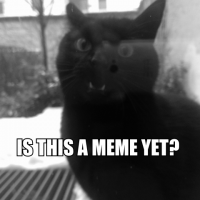Tag Archives: HTML5
Building HTML5 games for Firefox OS
Building HTML5 games for Firefox OS is basically the same as building for the web itself, because Firefox OS itself is built using web technologies. These are relatively new topics, and are which are gaining much traction in the press. With many companies interested in jumping in on these technologies, now's a good time to get involved... Read More
HTML5 for the Mobile Web: Canvas
February 12, 2014, by Ruadhán O'Donoghue
Next up in our HTML5 for Mobile Web series is the canvas element. Canvas is particularly interesting since it facilitates the use of graphics without the need for any plugins or other technologies other than JavaScript and CSS... Read More
HTML5 Canvas Meme Generator
February 12, 2014, by Ruadhán O'Donoghue
In this article we pull together some of the things we learned in our HTML5 canvas tutorial to build a simple HTML5 meme-generator web-app. First we present the app, and after we detail how it was built. So, here it is - load an image below, manipulate it, add some text, and download or save and share!... Read More
HTML5 for the Mobile Web: Touch Events
August 15, 2013, by Ruadhán O'Donoghue
With the widespread adoption of touchscreen devices, HTML5 brings to the table, among many other things, a set of touch-based interaction events. Mouse-based events such as hover, mouse in, mouse out etc. aren’t able to adequately capture the range of interactions possible via touchscreen, so touch events are a welcome and necessary addition to the web developer's toolbox. Use cases for the touch events API include gesture recognition, multi-touch, drag and drop, and any other touch-based interfaces... Read More
HTML5 for the Mobile Web: Device Orientation Events
July 10, 2013, by Ruadhán O'Donoghue
In this third article in our series on HTML5 for the mobile web, we take a look at the Device Orientation API. This API provides information about the orientation and movement of a device. Information comes from the positional sensors such as compasses, gyroscopes and accelerometers. Via this API, a web app can access and make use of information about how a device is physically oriented in space. Use cases include game control based on device tilting, and mapping where a map is correctly aligned with the world based on the device orientation data... Read More











